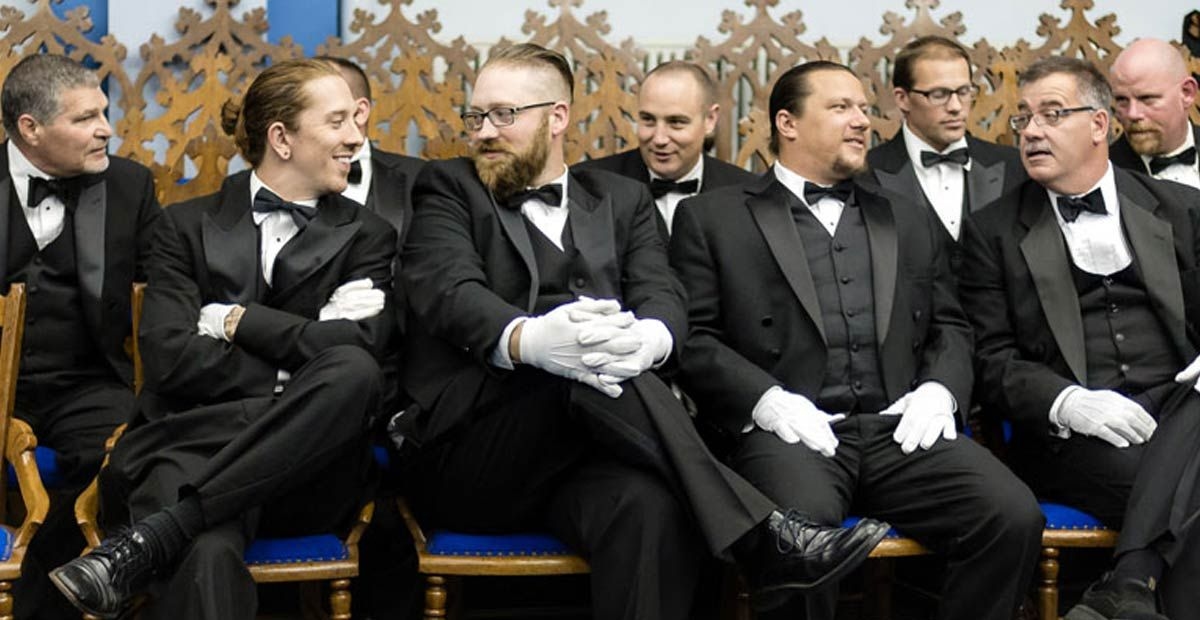Tylers, Toasts, and Tradition: A Look Inside a Masonic Lodge Meeting and Festive Board


The Formal Lodge Meeting
A stated meeting of a Masonic lodge follows a formal and predictable agenda. The primary business conducted includes an opening ceremony, the reading of the minutes from the previous meeting, voting on lodge finances and petitions from new candidates, and planning charitable activities.
Central to the meeting is the educational and ritualistic work. This can involve the performance of a Masonic degree ceremony for a new candidate, which is a solemn and dramatic play designed to teach moral lessons. At other times, a member might deliver a lecture on an aspect of Masonic history, philosophy, or symbolism, providing intellectual stimulation for the brethren.
Conduct within an opened lodge is governed by a strict code of etiquette that emphasizes respect and decorum. Members are expected to dress appropriately, typically in a suit and tie. A member who wishes to speak must first stand and be recognized by the Worshipful Master, who presides over the meeting. Private conversations are forbidden, and mobile phones must be turned off to ensure that the proceedings, particularly the degree ceremonies, are given the full and respectful attention they deserve.

The Festive Board: A Feast of Fellowship
After the formal lodge meeting is closed, many lodges will retire to a dining hall for what is known as the Festive Board. This is far more than just a meal; it is a structured social gathering steeped in centuries of tradition, designed to strengthen the bonds of brotherhood in a more relaxed setting.
The Festive Board typically includes a set menu and a formal seating arrangement. Its most characteristic feature is a series of formal toasts, offered in a specific order. Common toasts might include a patriotic toast to the nation's leader, a toast to the Grand Master of the jurisdiction, toasts to the visitors present, and a toast to the newest member of the lodge. These toasts are often accompanied by short speeches, responses, and sometimes the singing of traditional Masonic songs with great gusto. While the atmosphere is joyful and filled with good humor, it retains a sense of formality and tradition that distinguishes it from a casual dinner.
The lodge room and the dining hall can be seen as two sides of the same Masonic coin, each essential to the whole. The formal lodge meeting is where the "work" of Masonry is done—the solemn, internal labor of moral and spiritual self-improvement. The Festive Board is where the fruits of that labor are enjoyed. It is where the bonds of brotherhood, forged in the shared experience of the lodge's rituals, are strengthened through laughter, conversation, and hospitality. The formal work gives the fellowship its unique depth and meaning, and the warm fellowship makes the formal work a joy rather than a chore. A Masonic meeting is thus a complete experience, designed to engage the mind, elevate the spirit, and warm the heart.

From 'National Treasure' to 'The Man Who Would Be King,' we analyze how Hollywood portrays Freemasonry, separating truths from cinematic fiction.

Discover the Order of the Eastern Star, the largest fraternal organization for both men and women, and its deep connections to Freemasonry.

Curious about joining Freemasonry? This guide demystifies the process, from the basic requirements and finding a lodge to the petition and initiation.
Comments
No comments yet. Be the first to comment!